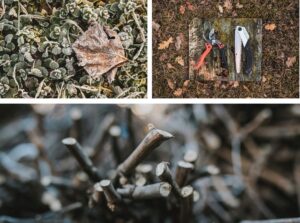PRUNING: THE CUT THAT GENERATES LIFE
The grapevine is a climbing bush, flourishing in nature in the sub-form of a vine. To obtain the light it needs, the wild grapevine supports itself by wrapping itself around trees until it reaches the top.
The grapevine is a climbing bush, flourishing in nature in the sub-form of a vine. To obtain the light it needs, the wild grapevine supports itself by wrapping itself around trees until it reaches the top.
From the mists of antiquity on, man has savoured the delicious qualities of the grape and the inebriating effects of wine, which led to efforts to domesticate the vine, this rendering unnecessary the dangerous climb to the tree-tops to gather its precious fruit.
The specific form that characterises the vines in today’s vineyards has been designed by man, with the objective of maximising the quality of the vine’s near-magical grape-clusters. Winter, or dry, pruning is the operation that creates and preserves that distinctive shape over time, in addition to regulating the quantity of grapes that the vine will produce over the growing year. The previous year’s shoots are cut away in order to provide space for the new buds to emerge, and this operation will significantly impact the vine’s crop over the next few years. The cutting of the “canes” is always done by hand, and it requires great skill and long experience. This vineyard practice intimately binds the grower to his vineyard, and he will perform it with consummate dedication throughout the entire winter season, to prepare the vine as effectively as possible for budbreak in the spring.
The pruned canes are then broken up and spread in the vine-rows so that they can enrich the soil as organic material, thus perfectly “closing the life cycle.”
